
 |
|
#1
|
|||
|
|||
|
Hello All - I've got some Engelmann Spruce from the east side of the Oregon Cascades..... a silviculturist friend confirmed it through pics. Hope he's right!
Anyways, I know next to NOTHING about getting fresh logs into shape for tonewood, nor do I know how to determine how good of tonewood it is. Some of the pieces indeed have nice tap tones but I love wood so I am biased! Can some of you familiar with Engelmann give your unfiltered opinions on whether this is firewood or tonewood? Also, if you want to provide tips on how to (identify good stuff in the forest  ), split, store, dry etc I'd love to hear thoughts about that too. ), split, store, dry etc I'd love to hear thoughts about that too.Here are pics with some additional commentary and questions: About 8" wide. I dont know what the color change to grayish brown is on the outside ~3 inches? Is it rotting? This tree fell this winter but did not have bark already. Makes me think it died awhile ago????? 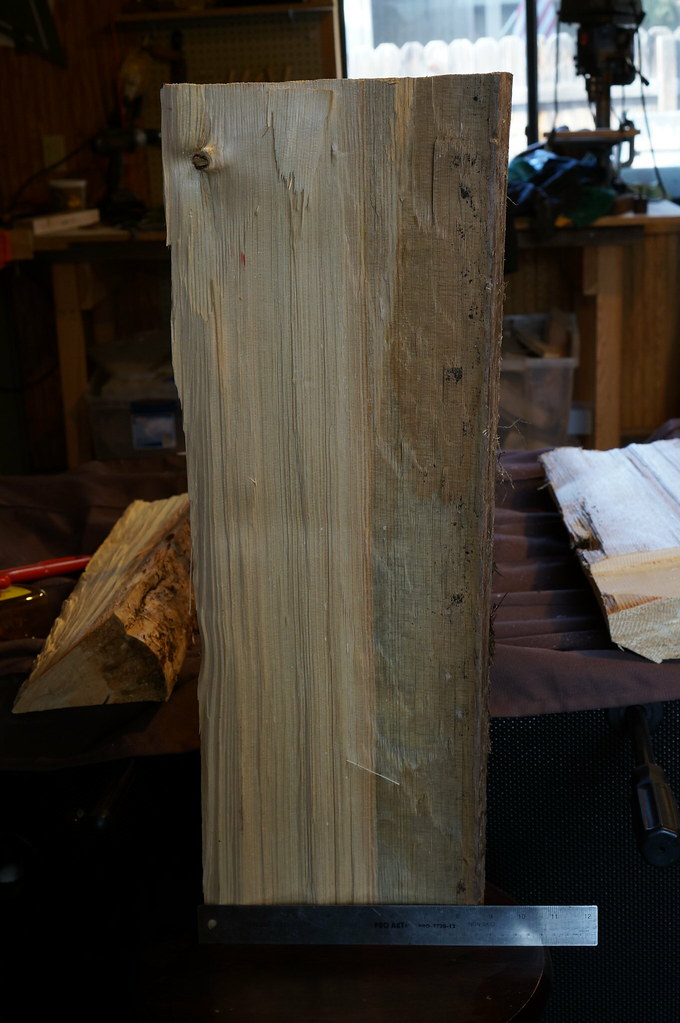 Engelmann spruce by samvanlan, on Flickr Engelmann spruce by samvanlan, on FlickrThis one is 8-9" wide. I dont know what the caramel colored bands in the middle are. I wonder if those would cause problems? 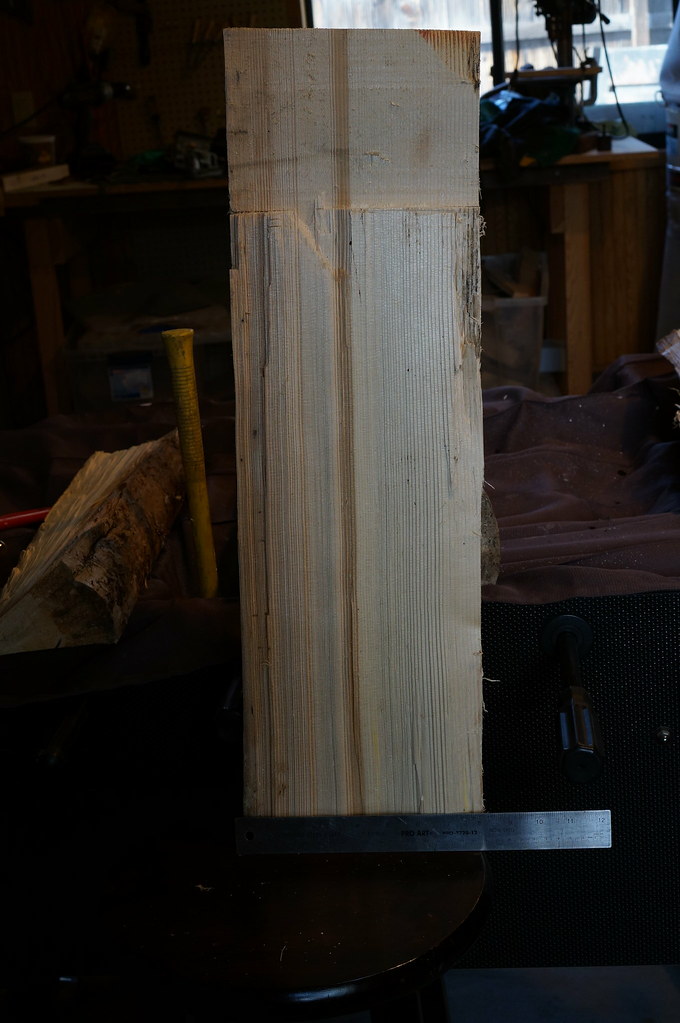 Engelmann spruce by samvanlan, on Flickr Engelmann spruce by samvanlan, on FlickrFrom same tree as previous pic but without the caramel bands: 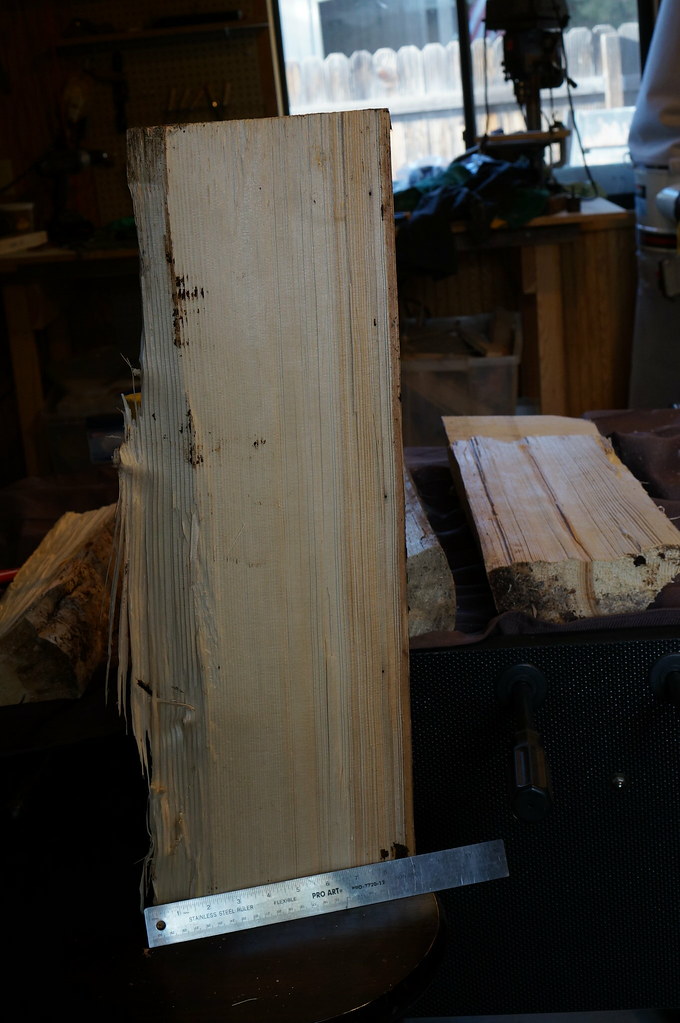 Engelmann spruce by samvanlan, on Flickr Engelmann spruce by samvanlan, on FlickrA clean face of pic2 (caramel bands): 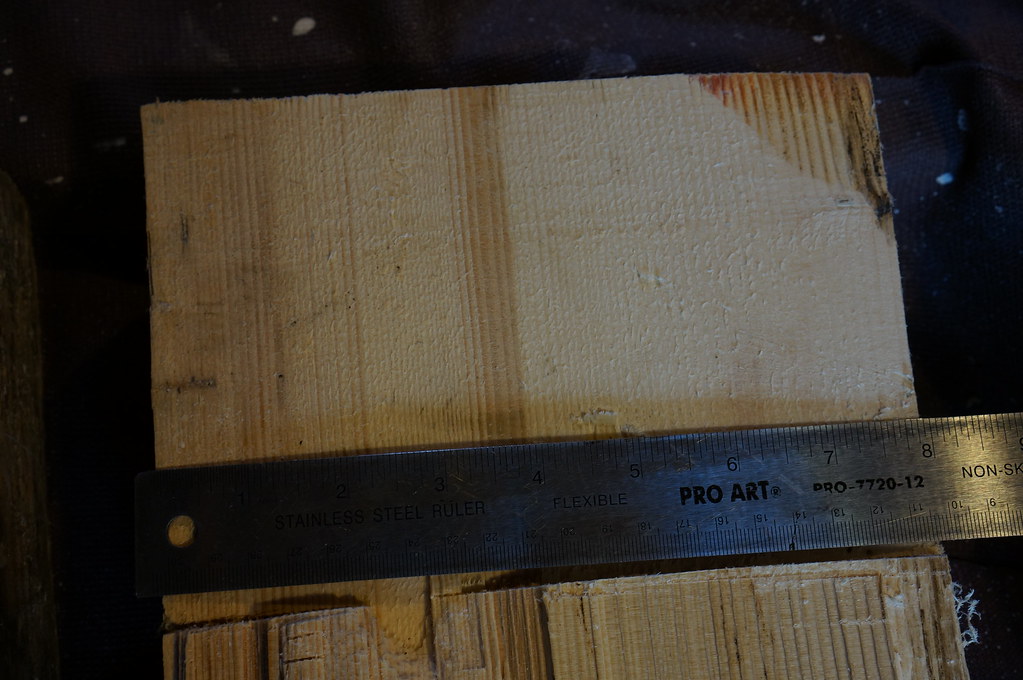 Engelmann spruce by samvanlan, on Flickr Engelmann spruce by samvanlan, on Flickr Engelmann spruce by samvanlan, on Flickr Engelmann spruce by samvanlan, on FlickrExample of the grain in x-section: 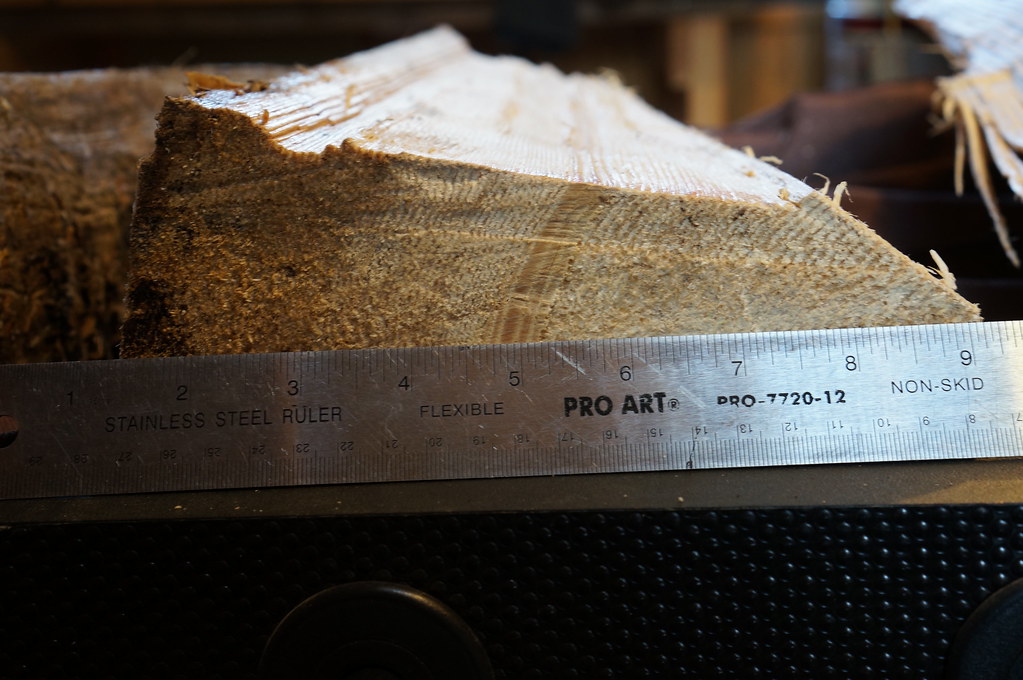 Engelmann spruce by samvanlan, on Flickr Engelmann spruce by samvanlan, on Flickr
|
|
#2
|
|||
|
|||
|
If you can saw out defect free, quarter sawn boards with minimal runout then it is top wood provided you give it a good seasoning. I would give it at least three years in sticks on a shelf out of the sun and wind.
__________________
Divots in my fingers Music in my head I wonder what would be If I chose car racing instead. Jim Schofield |
|
#3
|
|||
|
|||
|
The grayish color is blue stain, which is a fungus that grows in the sapwood after the tree dies. It is a cosmetic flaw that does not affect the structure. However, in addition to the blue stain, you may also have some rot. Rot can happen fairly quickly in a dead spruce where the bark has already fallen off. Rot is usually light brown in color, and the wood will be soft and easier to dent with a fingernail. I also see some worm holes in the sapwood....another indication that the tree has been dead for a while.
The dark banding is compression wood, which is denser than normal wood. I like compression in Engelmann, because it tends to make the wood harder. Engelmann tends to be on the soft side, and most of best sounding Engelmann guitars i have built have had some compression. However, I do like the compression to be more consistent, rather than in a narrow band. |
|
#4
|
|||
|
|||
|
I may never get a chance to harvest some wood but I have been trying to learn more about wood as a builder. People usually show a top and ask about it or asks how is the best way to process raw wood. With luck John sees the thread and comments about the wood or what to do and look out for. It is really interesting seeing examples which he refers to in these pictures.
|
|
#5
|
|||
|
|||
|
I think you can get some useful wood out of that. I remember hiking in the Hoh Rain Forest in Washington and crossing over mud bridges they made out of perfectly quarter sawn Sitka and thinking hmmm, I could sneak out here with a big back pack and....
 I say go for it, can't hurt to try. |
|
#6
|
|||
|
|||
|
If your doing this to save money............forget it! If you are doing it to get some experience...........do it, learn, and have fun. I doubt you will get much that you will want to use. If you would like to get some nice Engelmann see Kootenay Tonewoods run by Graham Hein.
Tom
__________________
A person who has never made a mistake has never made anything |
|
#7
|
|||
|
|||
|
Wow I love the forum! Thanks for all the help, Jim (as usual), John, printer, redir, and tom.
John Arnold: home run! So helpful. Thanks a bunch. Tom west: haha, in my mind I am thinking I'm saving money  . But I do enjoy the experience and learning about it. Mostly it's the treasure hunt feeling from splitting one open to find......the best tonewood ever! Or.....worm holes! I've got a friend on the prowl for some myrtlewood from his property. If I get that, it will be fun to build a guitar from woods I've worked from log to finish. Very fun. . But I do enjoy the experience and learning about it. Mostly it's the treasure hunt feeling from splitting one open to find......the best tonewood ever! Or.....worm holes! I've got a friend on the prowl for some myrtlewood from his property. If I get that, it will be fun to build a guitar from woods I've worked from log to finish. Very fun.
|
|
#8
|
|||
|
|||
|
John Arnold wrote:
"The dark banding is compression wood, which is denser than normal wood. I like compression in Engelmann, because it tends to make the wood harder. Engelmann tends to be on the soft side, and most of best sounding Engelmann guitars I have built have had some compression." I don't know how many Classical guitars John builds, but I'll say that light, soft Engelmann spruce with no compression grain is great for Classicals. Compression wood adds density without adding to the Young's modulus in proportion, in my measurements are to be believed. Since the stiffness goes up as the cube of the thickness you can always make a top stiffer by leaving it thicker, and a low density piece of wood will tend to end up weighing less at a given stiffness. Saving weight is generally a good thing in Classical guitars. In fact, depending on what you're after, it can be a good thing in any guitar. Generally speaking, the power the guitar can get out is proportional to the ratio of the top area to it's mass: the higher the A/m ratio, the more power you can get. OTOH, light tops can lack in 'headroom': as you drive them harder they seem to reach a point where the tone starts to get worse. Note that an over-driven light top may actually be putting out more sound than a denser one that has better 'headroom', the light top just may not sound as good above a certain level. In general, smaller guitars tend to have higher A/m ratios: it's easier to build a loud small one than a loud big one, but the small guitar will have less bass (usually). If you want a big, bassy guitar that you can drive hard you may need to use denser compression wood to ensure that it has headroom. That might not be necessary in a smaller one. |
|
#9
|
|||
|
|||
|
Want to do the same thing, from tree to guitar. Just for the satisfaction, know it won't be a case of saving money and might even spend more in the pursuit of doing it. Sort of like climbing a mountain.
Last edited by printer2; 04-05-2015 at 05:50 PM. |
|
#10
|
||||
|
||||
|
Quote:
Sam, these chunks are all right-handed so they won't work for you anyway  . . . .
__________________
VintageParlorGuitars.com Fresh inventory just added, click link at left to view |
|
#11
|
|||
|
|||
|
I could be wrong, but it looks to me that there's very little that's quartersawn.
You may be able to get one or two bookmatched tops out of the three pieces. I'm surprised John didn't mention it.
__________________
Rodger Knox, PE 1917 Martin 0-28 1956 Gibson J-50 et al |
|
#12
|
|||
|
|||
|
Could be used for braces - would make a lot of that.
__________________
David My Woodworking YouTube channel - David Falkner Woodworking -------------------------------------------- Martin, Gallagher, Guild, Takamine, Falkner |